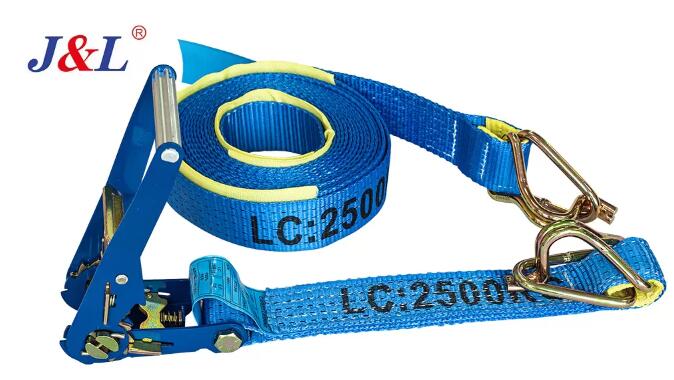A Step-by-Step Guide on How to Use Ratchet Straps
Ratchet straps, also known as tie-down straps, are essential tools for securing loads during transport. Whether you're hauling goods in a truck or securing items on a trailer, knowing how to use ratchet straps correctly is crucial for both safety and efficiency. Let's walk through a step-by-step guide to ensure you're harnessing the full potential of these versatile tools.
Step 1: Inspection of the Ratchet Straps
Before you begin, inspect the ratchet straps for any signs of damage or wear. Check the webbing for cuts, fraying, or abrasions, and examine the ratchet mechanism for proper functioning. If you identify any issues, replace the strap to ensure the reliability of the tie-down.
Step 2: Choose the Right Ratchet Strap for the Load
Select a ratchet strap that matches the size and weight of the load you are securing. The working load limit (WLL) indicated on the strap provides guidance on the maximum load the strap can handle. It's crucial to choose a strap with a WLL that exceeds the weight of your load.
Step 3: Attach the Ratchet Strap to Anchor Points
Identify suitable anchor points on the vehicle or trailer to secure the load. Anchor points should be robust and capable of withstanding the force applied by the ratchet straps. Avoid attaching the straps to weak or unstable points that may compromise the integrity of the tie-down.
Step 4: Thread the Ratchet Strap
Thread the loose end of the ratchet strap through the mandrel of the ratchet mechanism. Pull the strap through until there is enough tension to hold the load securely. Ensure that the strap lies flat and is not twisted or tangled.
Tips for Using Non-Sparking Tools Safely
Pattern Rollers: Transforming Surfaces with Artistic Imprints
How Do I Choose a Weldon End Mill Holder?
How long will a diamond blade last?
Non-Sparking Sockets and Accessories: A Crucial Component for Safety
What kind of roller do you use for epoxy flooring?
Which Cordless Drill is Best for Home Use?
Step 5: Tighten the Ratchet Strap
Operate the ratchet mechanism by raising and lowering the handle. This action tightens the strap around the load. Continue ratcheting until the strap is snug and the load is securely fastened. Be cautious not to over-tighten, as this may damage the strap or the load.
Step 6: Secure Excess Strap Length
Once the ratchet strap is tightened, secure any excess length of strap to prevent it from flapping in the wind during transport. Some ratchet straps come with built-in mechanisms or loops for this purpose. Alternatively, you can use Velcro straps or other means to manage excess length.
Step 7: Perform a Final Check
After securing the load, perform a final check to ensure that the ratchet straps are properly tensioned and the load is securely fastened. Confirm that all anchor points are secure and that there are no visible signs of slippage or loosening.
Step 8: Removal and Storage
When you reach your destination and it's time to unload, release the tension on the ratchet strap by opening the ratchet mechanism. Carefully unwind the strap from the load and store it in a clean, dry place. Inspect the strap again for any damage before storing it for future use.
Conclusion: Safely and Effectively Securing Your Load
In conclusion, using ratchet straps involves a systematic process to ensure the safety and security of your load during transport. Regular inspection, proper selection, and careful application of these versatile tools contribute to successful and efficient tie-downs.
For a wide selection of high-quality ratchet straps or to explore our range of cargo securing solutions, please don't hesitate to contact us. As your dedicated cargo securing equipment supplier, we are committed to providing top-notch products and expert guidance to meet your specific needs.
What is a DTH drill bit?
How to clean table saw blades
394
0
0
All Comments (0)
If you are interested in sending in a Guest Blogger Submission,welcome to write for us!



Comments